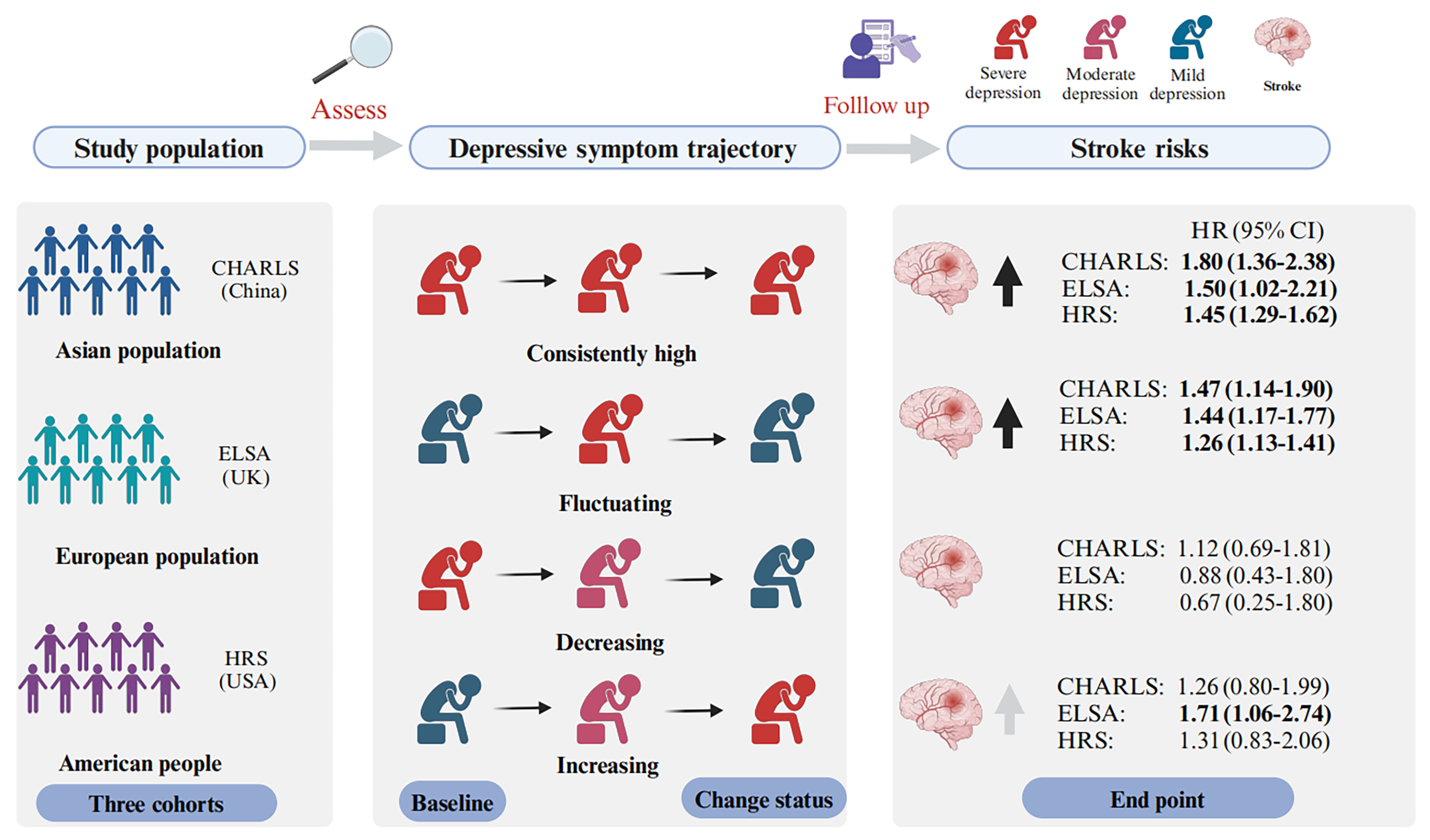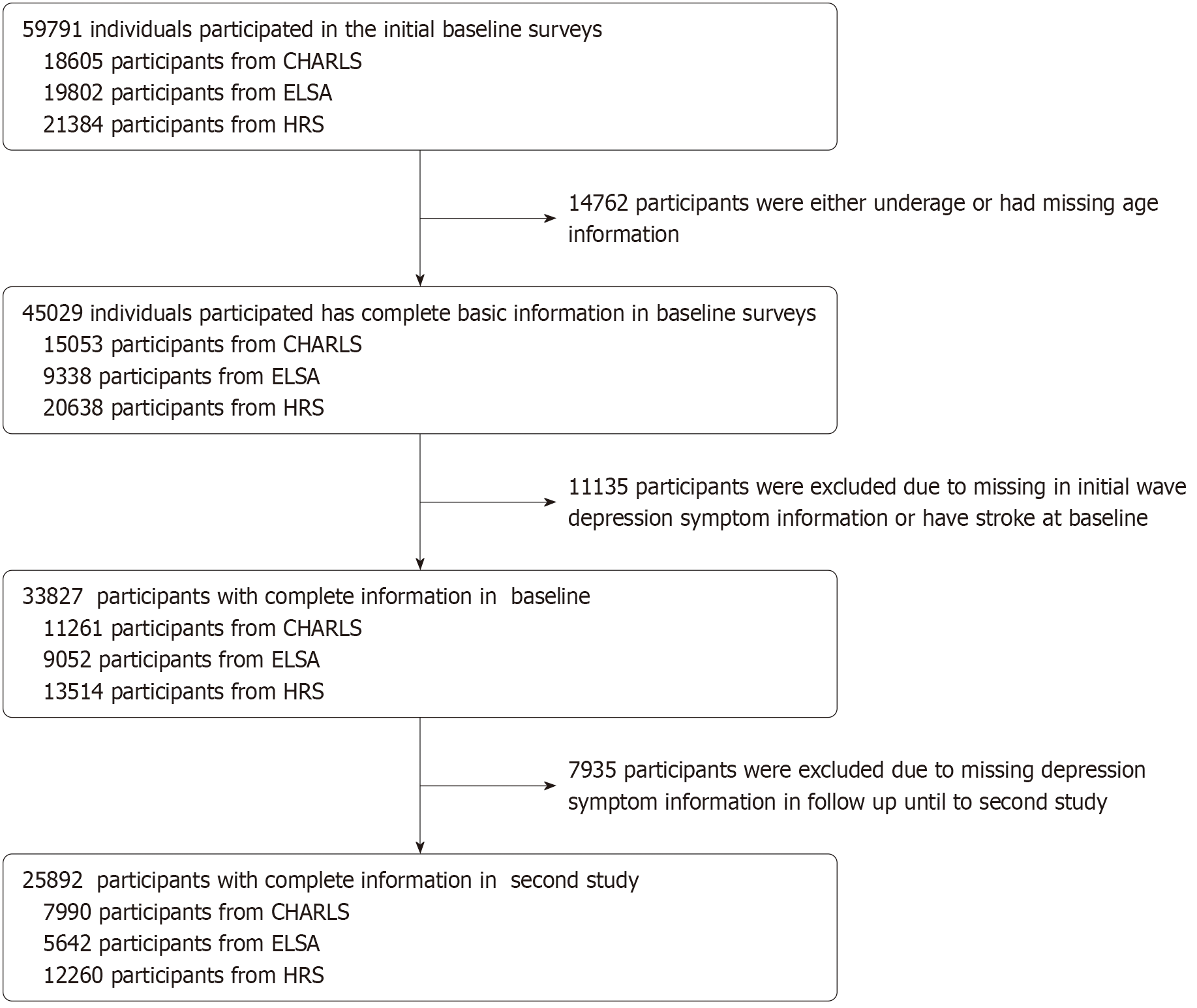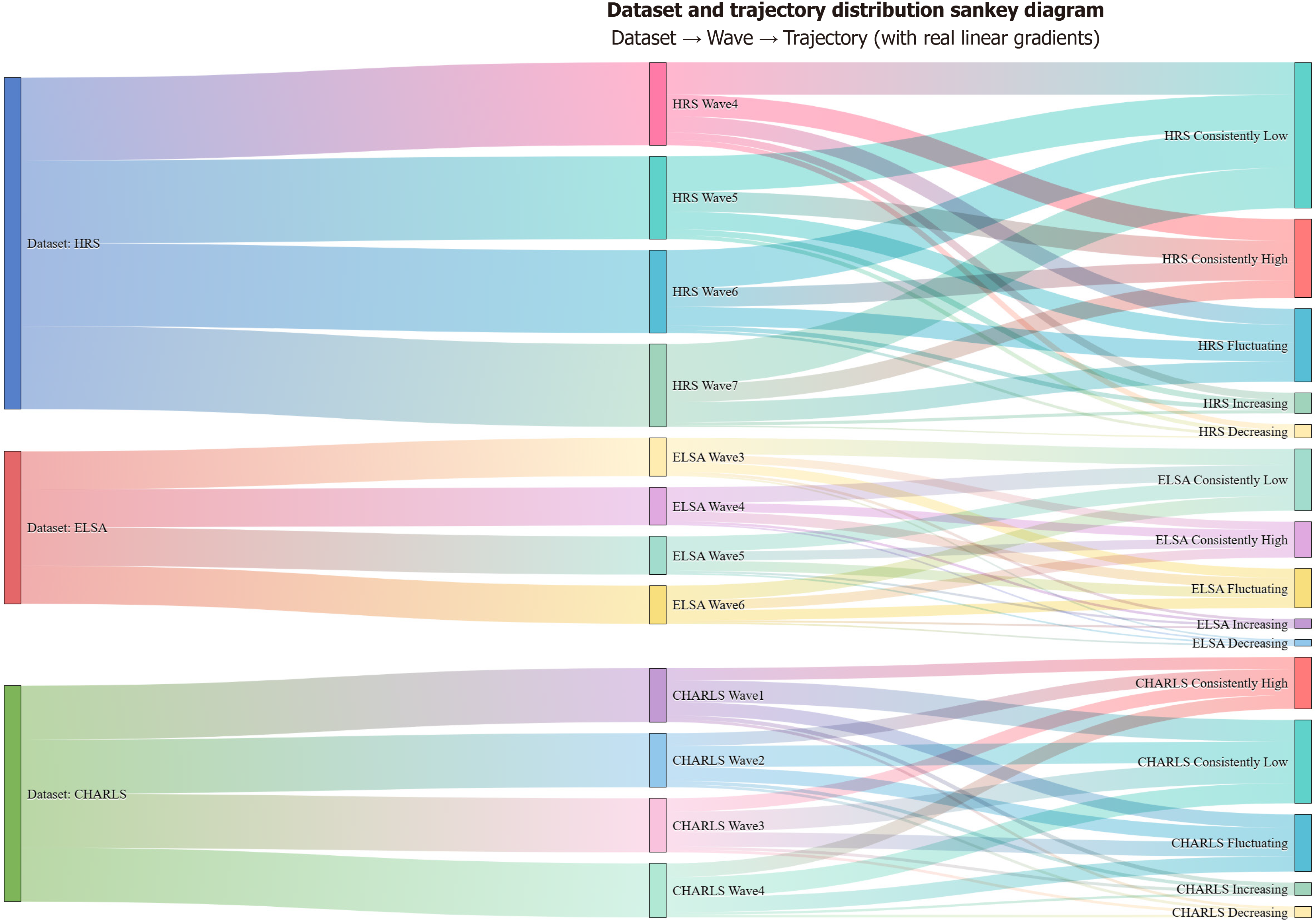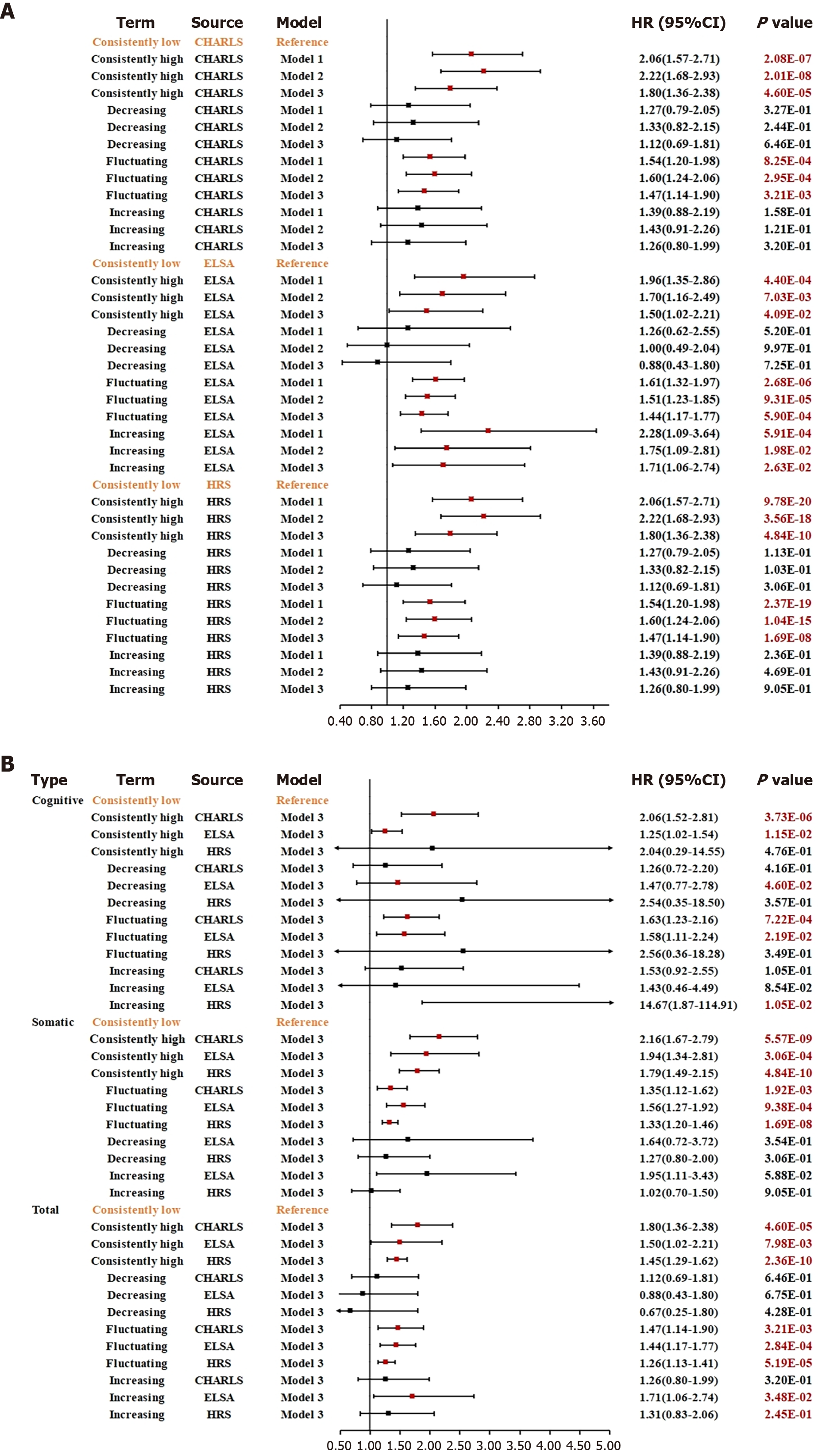Copyright
©The Author(s) 2025.
World J Psychiatry. Oct 19, 2025; 15(10): 108061
Published online Oct 19, 2025. doi: 10.5498/wjp.v15.i10.108061
Published online Oct 19, 2025. doi: 10.5498/wjp.v15.i10.108061
Figure 1 An overview of the study design and results.
This study established the trajectories of total, somatic, and cognitive depressive symptoms through an 8-year follow-up of three prospective cohort studies. Subsequently, it explored the relationship between depressive symptom trajectories and the risk of stroke occurrence. The three geographically representative cohorts confirmed that persistently high and fluctuating depressive symptoms increase the risk of stroke, while a reduction in depressive symptoms does not. The increased risk of stroke associated with a sustained increase in depressive symptoms was more pronounced in European and American populations, while further research is needed to confirm this in Asian populations. CHARLS: China Health and Retirement Longitudinal Study; ELSA: English Longitudinal Study of Ageing; HRS: Health and Retirement Study.
Figure 2 Flowchart of the study population selection process.
CHARLS: China Health and Retirement Longitudinal Study; ELSA: English Longitudinal Study of Ageing; HRS: Health and Retirement Study.
Figure 3 Sankey diagram of participants, waves, and trajectories in three prospective cohorts.
CHARLS: China Health and Retirement Longitudinal Study; ELSA: English Longitudinal Study of Ageing; HRS: Health and Retirement Study.
Figure 4 Persistently high and fluctuating trajectories somatic depressive symptoms increased the risk of stroke onset across all populations.
A: Relationship between total depressive symptom trajectory and stroke risk in representative cohort studies from Asia (China Health and Retirement Longitudinal Study), Europe (English Longitudinal Study of Ageing), and Americas (Health and Retirement Study) regions; B: Relationship between different total, somatic and cognitive-affective depressive symptom trajectories and stroke risk. CHARLS: China Health and Retirement Longitudinal Study; ELSA: English Longitudinal Study of Ageing; HRS: Health and Retirement Study.
- Citation: Zou XL, He CL, Li X, Jiang JJ, Tang YS, Cui GY, Zhang WY, Zhou C. Longitudinal trajectories of somatic and cognitive-affective depressive symptoms influence stroke risk across different populations: Three prospective cohort studies. World J Psychiatry 2025; 15(10): 108061
- URL: https://www.wjgnet.com/2220-3206/full/v15/i10/108061.htm
- DOI: https://dx.doi.org/10.5498/wjp.v15.i10.108061
















